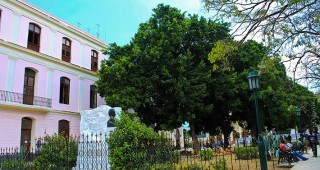
Designed by Italian engineer Juan Bautista Antonelli and built by slaves with rocks extracted from the moats in the last decades of the 16th century, the Morro Castle to defend the town of San Cristobal de la Habana. However, due to economic problems and contradictions among Cuba’s governors and Antonelli, construction works took 30 years and were not completed until the 17th century. The floor is a polygon adapted to the elevated rock it was built on. It has two bastions, Tejada and Austria, and a semibastion on the elevation, facing the sea. Another interesting feature are the holes in the back walls through which prisoners were fed to the sharks. This fortress was the main defensive construction in the Havana harbor until La Cabaña was completed 1774.
The Morro Castle first saw action in 1762 with the British invasion of Havana. The invading forces, consisting of 44,000 British soldiers, attacked the structure from its landward side and were able to take the fortress by successfully mining one of its ramparts. A plaque and a small memorial commemorate the 44-day siege.
Castillo de los Tres Reyes del Morro is one the symbols of Havana and one of the most visited places by both tourist and locals. It has been photographed and painted by many and has also appeared in several movies. Inside are several exhibitions, but the construction itself is worth a visit.
Along with a deep moat and two batteries, additional defence was originally provided by an ocean-side tower, replaced in 1844 by a lighthouse called the Faro del Morro. Now a symbol of Havana, it offers one of the finest views of the city, especially at sunset. The history of the lighthouse and castle is explored in the Sala de Historia, while the Sala de Cristóbal Colón charts the history of Columbus’s journey to the Americas. Another interesting historical feature of the castillo is the prisons, which have holes in the back walls through which prisoners were fed to the sharks.









 Traditional Bar
Traditional Bar






